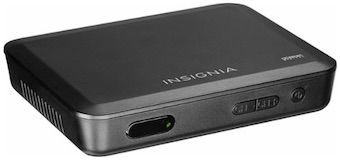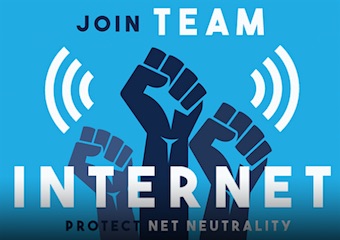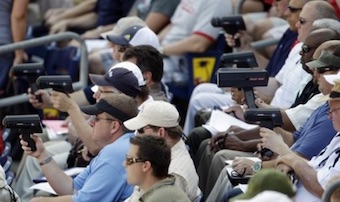The expected nomination of CenturyLink’s Debra Peterson as chair-elect of PRSA Saturday will focus attention of its 21,000 members and others on abuses of her employer and the other telecoms.
Negative comments about CenturyLink abound on the web. Consumer Affairs shows 713 comments, 689 giving the company one star out of a possible five.
 |
Facebook displays many of the same complaints about alleged poor customer service, over-charging, complicated bills and technical failures.
Charges that CenturyLink engaged in false billing practices have been compared to charges against Wells Fargo that resulted in $185 million in fines and 5,000+ staffers being fired. CenturyLink fines could total $12 billion, complainants say.
WF CEO John Stumpf retired in October 2016, taking a $133 million package.
Minnesota on July 12 joined seven other states in filing a class-action consumer suit against the company, saying CenturyLink customers had to contend with “an incredibly complicated pricing scheme” that involved more than 1,500 different scenarios of what would be charged.
Peterson is VP-external and community relations and presumably would have some influence on its communications and customer service.
CenturyLink CEO Glen Post will be succeeded at the end of 2018 by Jeff Storey, CEO of Level 3 Communications, which CenturyLink is acquiring. Post will be executive chairman of the board. The merger is to close by Sept. 30, 2017.
Consumers: Buy Cable Boxes
An entry into this complicated subject is the cable box that sits by TV sets. Consumers are not generally aware of it but they can buy such boxes for $59.99 from Best Buy instead of paying $10 a month per box.
Renting costs the average home $231 yearly, noted a New York Times editorial Aug. 31, 2015. It urged consumers to buy their own “better, cheaper cable boxes.”
 |
Mergers, says Nick Pino of Techradar, have resulted in five “powerful” telecom companies--Comcast, Time Warner, Verizon, Cox and AT&T. AT&T’s proposed $85.4 billion acquisition of TW appears to be moving forward, helped by the FCC.
Pino leaves out low-profile CenturyLink which, with $17.9 billion in sales, is the third largest telecom after AT&T and Verizon. Its 43,000 employees serve customers in 37 states.
The telecoms, he says, have “concocted dozens of dirty plans over the years, from establishing a non-compete clause in markets like San Francisco, New York and Los Angeles to fighting the FCC tooth-and-nail against Net Neutrality,” he wrote 7/27/2015.
Consumers Fight for 'Net Neutrality'
Net neutrality requires internet service providers and governments to treat all data the same, charging differently by user, content, website, platform, application, type of attached equipment, or mode of communication.
Freepress Action Fund and others say FCC Chairman Ajit Pai has made “a dangerous proposal to destroy Net Neutrality” and are organizing protests against it
Another issue facing the telecoms is consumer opposition to installation of new Fifth Generation or 5G wireless technology. The opposition says the dangers to health of a vast expansion in wireless transmitters have not been fully explored and that local communities would be giving up too much control of such installations.
 |
The League of California Cities says proposed state law SB 649 would require local governments “to lease out the public’s property, cap how much cities can lease this space for, and eliminate the ability for cities to negotiate public benefits.”
Lost would be the public’s input and review except for areas in coastal zones and historic districts.
The bill would allow for antennas as large as six cubic feet and equipment boxes totaling 35 cubic feet. There would be no size or quantity limitations for electric meters, pedestals, concealment elements, demarcation boxes, grounding equipment, power transfer switches, and cutoff switches.
Health advocates say excessive pulsed electro-magnetic radiation in the environment is responsible for a host of ill health effects and deaths.
The California Assembly will vote on the bill in early September.
Telecoms Beset by Health Issues
Another issue involving invisible radiation is research by fullertoninformer.com indicating that pitchers are getting cancers in the front of their brains and catchers and umps in the back of theirs because of the microwave laser beams that measure the speed of every pitch which are beamed at them from behind home plate.
 |
Major League Baseball Commissioner Robert Manfred and the MLB Players Assn., both based in New York, have been emailed requests for comment on the cancer charges.
Michael Weiner, who was executive director of the Players Assn., died of a brain cancer Nov. 21, 2013 at age 51. Joe Imbriano, who conducts fullertoninformer.com, said cellphone use may have been the cause.
Gary Carter, who caught for the Montreal Expos for 11 years to 1984 when he was traded to the New York Mets, handling 300,000+ pitches that were measured by radar guns, developed brain cancer that led to his death at 57 on Feb. 16, 2012. The tumor was wrapped around the back of his brain.
Time mag wrote about cancers in baseball players after Phillies catcher Darren Daulton contracted two brain cancers that were successfully removed in 2013.
Dan Quisenberry, (1953-98), a right handed pitcher for the Kansas City Royals, developed brain cancer on his left temporal lobe.
Bobby Bonds, 57, San Francisco Giants, died of a brain tumor and lung cancer in 2003. He is the father of Barry Bonds of the Giants and Pittsburgh Pirates who hit 762 home runs.
One of the more notable anomalies in baseball’s bizarre brain tumor incidence is what went on with The Phillies at Veterans Stadium, says Imbriano.
Five Victims in Philly
Five who played for the Phillies including Tug McGraw, John Vukovich, Johnny Oates, Ken Brett and Daulton, developed brain tumors.
McGraw, who died in 2004 at the age of 59, had a tumor was on his left temporal lobe.
Vukovich (1947-2007) was an infielder who spent most of his career at third base. His brain tumor was diagnosed in 2001.
Catcher Oates (1946-2004) had a tumor in the back of his head in the brain stem.
Pitcher Ken Brett (1948-2003) had a tumor on his frontal lobe.
Catcher Daulton had two brain tumors that were successfully removed in 2013
Pitcher Ricky Stone of the Cincinnati Reds survived after being operated for a brain tumor in 2009.
Bobby Murcer (1946-2008) New York Yankees center fielder and broadcaster, died of a tumor that was on his right frontal lobe.
Curt Schilling, former Phillies pitcher and recently announced he was diagnosed with mouth cancer which he blamed on chewing tobacco.
San Francisco Giants pitcher Dave Dravecky developed cancer in his pitching arm that ended his career.


 PRSA-NY today announced its five honorary co-chairs for its Big Apple Awards ceremony gala slated for TAO Downtown on Nov. 15.
PRSA-NY today announced its five honorary co-chairs for its Big Apple Awards ceremony gala slated for TAO Downtown on Nov. 15. PRSA-NY president Carmella Glover today issued a "heartfelt apology" on behalf of the chapter for her Oct. 14 message that "caused disappointment and hurt to some of our valued members."
PRSA-NY president Carmella Glover today issued a "heartfelt apology" on behalf of the chapter for her Oct. 14 message that "caused disappointment and hurt to some of our valued members." The leadership of Public Relations Society of America is backing a move to change the current “must-have” APR accreditation to “strongly preferred” as a requirement for a seat on its board of directors.
The leadership of Public Relations Society of America is backing a move to change the current “must-have” APR accreditation to “strongly preferred” as a requirement for a seat on its board of directors. Public Relations Society of American today named Linda Thomas Brooks CEO, succeeding CFO Phil Bonaventura, interim chief since July 2019.
Public Relations Society of American today named Linda Thomas Brooks CEO, succeeding CFO Phil Bonaventura, interim chief since July 2019.


 Have a comment? Send it to
Have a comment? Send it to 
No comments have been submitted for this story yet.